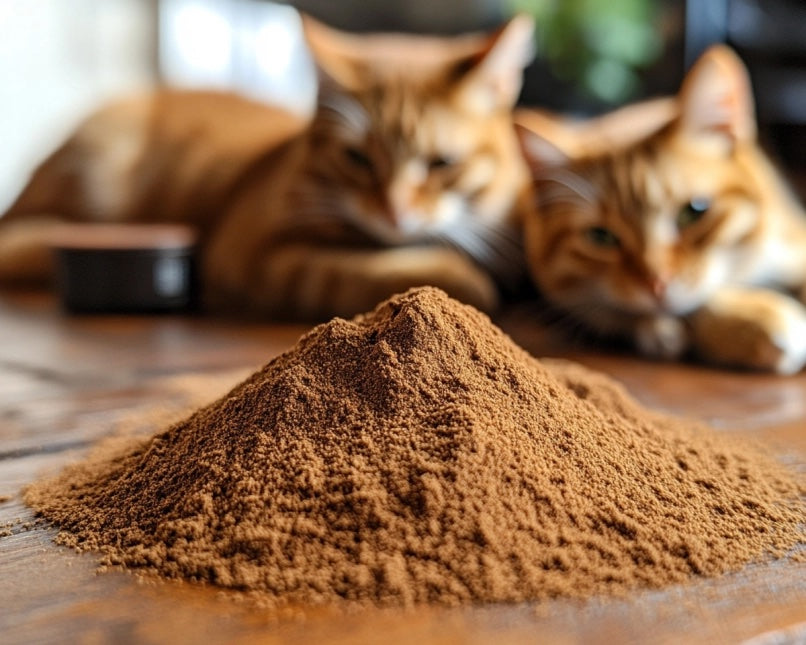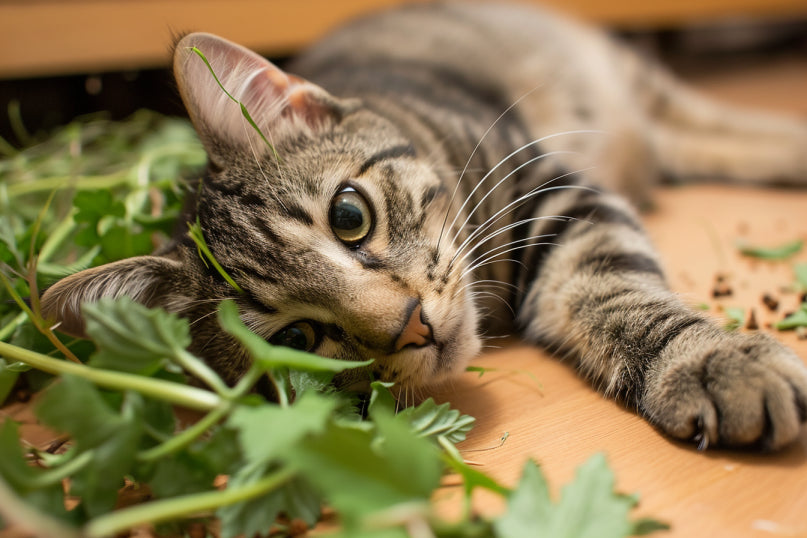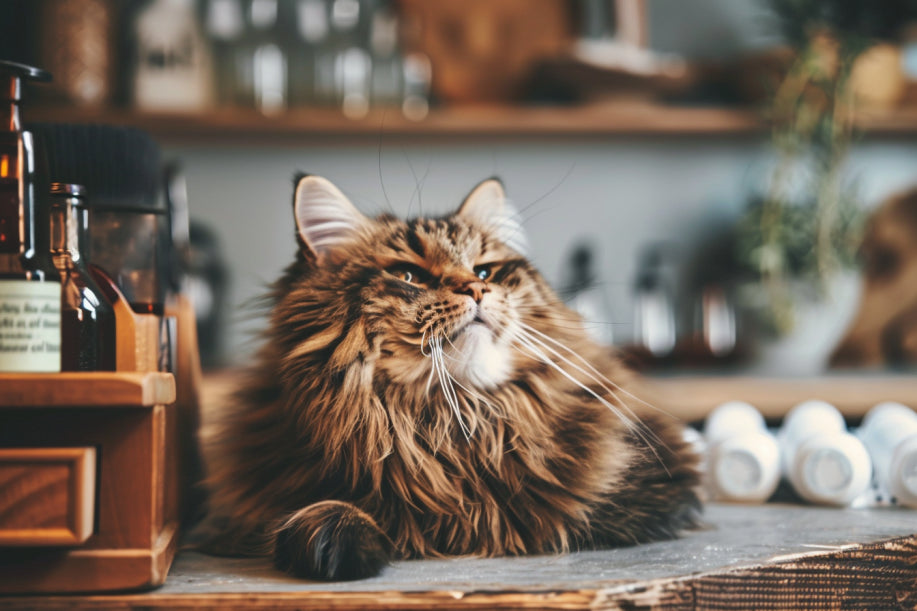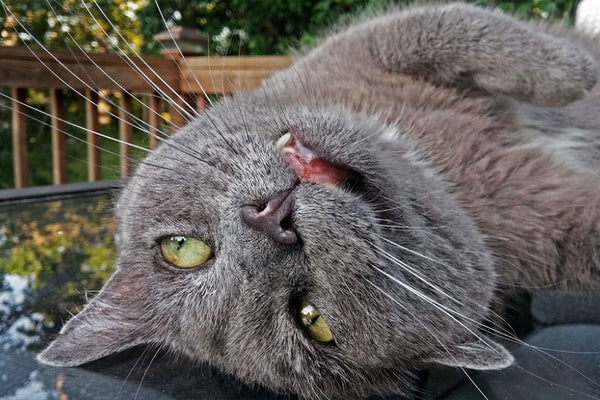
Valerian root is commonly called “poor man’s Valium” because it helps people relax, unwind, and get a good night’s sleep. Not so for Felix. “Valerian root is a stimulant for cats. It promotes play, reducing stress and anxiety,” says Sakura David, a veterinary consultant for CatPet.
If your cat is one of the 30% that's "meh" about catnip, try valerian root. It has many chemicals (i.e., actinidine, nepetalactone, etc.) that attract cats.
Ready to transform your chonky cat into an exercise machine? Here’s what you need to know about valerian root.
What’s valerian root?

Valerian is a perennial flowering plant that grows in the Northern United States, Central-Eastern Canada, Europe, and Eastern Russia. It’s found in lime-rich soil near low, damp meadows, marshy thickets, and river banks.
In the spring, valerian forms a straight, hollow stem and dark green leaves that are pointed at the tip and hairy underneath. It blooms from June to August and is pollinated by bees, flies, and beetles. Its white-pinkish, trumpet-shaped flowers pump out a sweet vanilla-and-clove scent.
Valerian root is light grayish brown and about the size of a finger joint. “But it smells like spoiled cheese or stinky feet,” David says.
What’s valerian root used for?

The ancient Greeks and Romans used valerian root to treat nausea, gas, heart palpitations, urinary tract infections, and insomnia. They also hung it outside their homes to scare away witches and demons.
The Germanic tribes believed it could tame the wildest of beasts. Hertha, a Teutonic witch-goddess, rode a deer crowned with hops and used a stalk of valerian as a whip.
During the Middle Ages, astrological botanist Nicholas Culpeper boiled valerian root with raisins, licorice, and aniseed. He used the potion to treat bubonic plague and chest congestion.
In 1620, valerian root was brought to North America on the Mayflower. During World War I and World War II, it was used to relieve stress caused by air raids. It was also mixed with hops and kava-kava to treat shell-shocked frontline troops.
Today, valerian root may help some cats cope with separation anxiety, travel stress, and loud noises (e.g., fireworks, thunder, and gunfire). One small scale study found that valerian root can be used to treat rapid heartbeat, high blood pressure, arthritis, and epilepsy in female cats.
How do cats respond to valerian root?
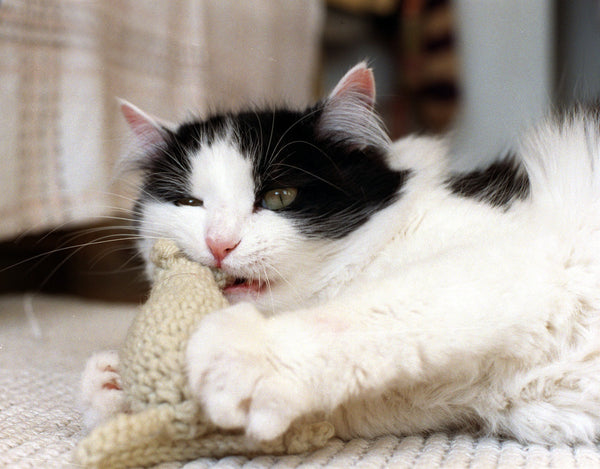
Valerian root is available in over-the-counter tablets, bite-sized treats, lemongrass-infused sprays, or coarsely-chopped pieces.
“The preferred method of enjoyment is sniffing the root or stuffing it in a toy for them to play with,” David says. Most cats will chase, kick, or chew their toys. They may purr or drool while they hold them and look like they’re completely blissed out. Cats may also roll around on the floor or run around the room. “The effects of valerian root may last between five and 30 minutes,” David says.
Cats also have a “valerian root gene”. It doesn’t turn on until they're between three and six months old. According to one study published in BMC Veterinary Research, 50 percent of cats won’t have a reaction.
What are the differences between catnip, silvervine, and valerian root?
|
Catnip |
Valerian Root |
||
 |
 |
 |
|
|
Scientific name |
Nepeta cataria |
Actinidia polygama |
Valeriana officinalis |
|
Nicknames |
Catswort, catmint, and field balm |
Matatabi, Japanese catnip, and cat powder |
All-heal, cat’s love, capon’s tail, garden heliotrope, Phu, setwall, and vandal root |
|
Grows in |
Asia, Africa, Europe, and North America |
Mountainous regions of China, Eastern Russia, Japan, and Korea |
Central-Eastern Canada, Europe, the Northern United States, and Eastern Asia |
|
Plant type |
Herbaceous plant |
Fast-growing, fruit-bearing vine |
Perennial flowering plant |
|
Chemicals that attract cats |
|
|
|
Eating effects
|
|||
Smell effects
|
|||
|
|
|
|
|
Is valerian root safe?
Valerian root is safe for your cat to smell. David doesn't recommend feeding your cat valerian root because it can be a choking hazard. You also shouldn't give your cat human-grade valerian powder, pills, or liquids. They might contain harmful ingredients, such as garlic or grapefruit.
Valerian root attracts earthworms, rats, dogs, foxes, and coyotes. Store it in an airtight container at room temperature and out of direct sunlight.
Before using valerian root to treat your kitty's medical problems, please talk with a veterinarian. Your vet can also tell you whether valerian root will interact with any other medicines your cat is on.
